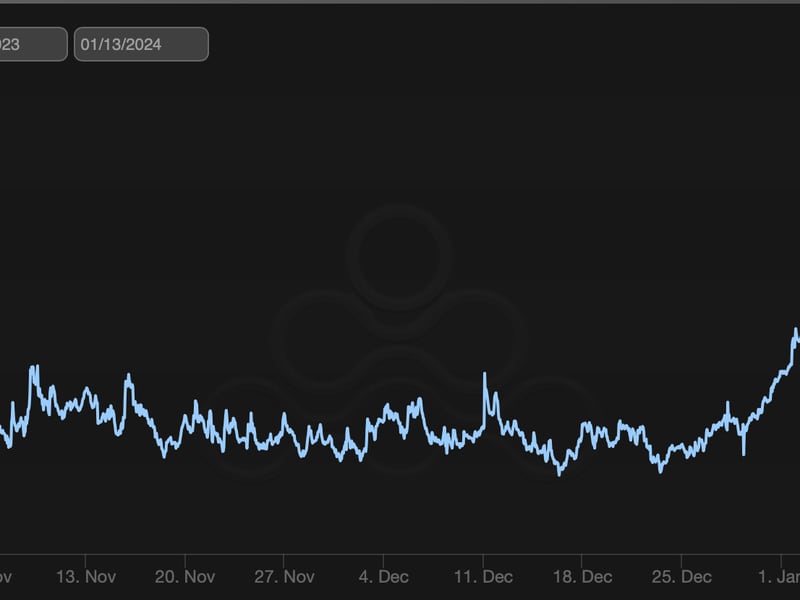Bitcoin ETF Debut Serves as a Lesson for Ether ETF Speculators

- Bitcoin’s implied volatility has crashed since the SEC’s approval of spot ETFs, a lesson for volatility traders as the focus shifts to ether ETF optimism.
- Traders looking for clues on how ether may perform ahead of and following the potential ETF launch later this year may want to track how options are priced.
Nearly a dozen spot bitcoin [BTC] exchange-traded funds (ETFs), assets that invest in the actual token, began trading in the U.S. on Thursday. The highly-anticipated investment products came into effect after years of wait as the Securities and Exchange Commission (SEC) approved them on Wednesday.
While several things happened in the weeks leading up to their debut, some related to implied volatility and the options market are worth noting as speculators look at ether [ETH] as the next likely candidate for a spot ETF approval.
Implied volatility represents investors' expectations of price turbulence and positively impacts the prices of call and put options. A call allows buyers to profit from or hedge against price rallies, while a put offers protection against price slides.
When facing a binary event such as the earning’s date in a stock or the SEC’s decision on spot ETF applications, traders tend to buy options to build a “long vega” position that benefits from increases in implied volatility. The strategy, however, exposes traders to a potential post-event crash in volatility and the resulting slide in options prices.
That’s precisely what happened in the bitcoin market, a lesson for ether traders that holding a long volatility exposure on the day of the ETF announcement may be risky, according to crypto quant researcher Samneet Chepal.
"It’s a sea of red for vols right now. Something to remember with the ETH ETF story unfolding. Price action usually ramps up well before the big day, but volatility often spikes just as the event draws closer. By the time of the actual announcement, being net long vol might not be ideal,” crypto quant researcher Samneet Chepal said on X.
“For the ETH ETF, considering a short vega (vol) position could be viable as we’ve been down this road with the BTC ETF, giving us a bit of insight into what might be coming up,” Chepal added.

While bitcoin’s price began rallying on ETF optimism in early October, the annualized seven-day implied volatility kicked into high gear this month, reaching 96% ahead of the SEC’s approval. But since then, it has collapsed to 52%.
Focus on options pricing
Bitcoin rallied over 60% in the three months leading up to the ETF launch. Still, the consensus view early this week dismissed the possibility of a sell-the-fact pullback following the Jan. 10 launch, calling an unabated rally.
Options, however, warned of a post-approval cooling period. Early this week, bitcoin puts began trading at a premium to calls, in a sign of sophisticated market participants seeking protection against price drops.
Bitcoin rose from $46,000 to above $49,000 after the spot ETFs began trading Thursday. However, the pop was short-lived, and prices have retreated to nearly $46,000 since then.
Therefore, traders may want to keep track of how ether options are priced as they speculate on the potential launch of an ether spot ETF.
Several firms have filed applications for spot ether ETFs, including BlackRock, in November 2023. The earliest deadline for approvals is in May for VanEck’s ETF, followed by BlackRock’s in August.








